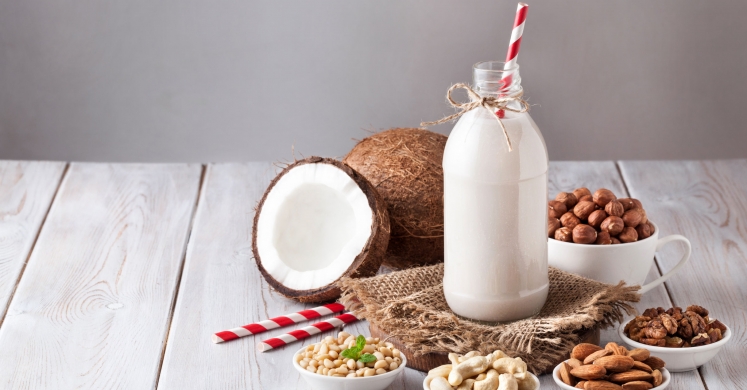Blog

Ask Ginger: Understanding Milk Alternatives
You've got questions ... we’ve got answers! Email your queries about healthy foods, physical activity and screen time for kids and Ginger will answer them here on the Phipps blog.
Q: I have seen a rise in alternative milk products (soy, almond, rice, cashew) in my local grocery store. What are the benefits of the different milk alternatives and are they just as healthy as regular milk? (Frank, Wexford)
A: Great question! People use alternative milk sources for a variety of reasons such as lactose intolerance, diet restrictions, trying to reduce intake of calories or disliking the taste of milk.
Alternative milk products are naturally low in calcium, however manufacturers often fortify them to bring the calcium content up to that of dairy milk.1 There is no standard fortification level required for alternative milk products, so the calcium content varies considerably from brand to brand.1 With that being said, it is very important to read the nutrition facts label on the side of the cartons to ensure you are getting the amount of vitamins and minerals you want from your alternative milk products. Use this helpful resource to learn more about reading nutrition fact labels and what you should look for, here.2
Another thing to keep in mind when looking at nutrition facts labels is the level of sugar in alternative milk products. Many varieties of these milks can come flavored, which means sugar will be added to these beverages to make them sweeter. If you prefer a flavored variety of your milk alternative, look for no sugar added options! They are still tasty and flavorful, but do not contain added sugar.
If you are considering using milk alternatives for your children, it is always best to consult a pediatrician/dietitian first. It is also important to remember3,4:
- Breastmilk is best during first 6 – 12 months
- Soy, rice and other alternative milks are considered unsafe during the first year
- Be sure to consult a pediatrician before beginning an iron fortified soy-based formula
- Alternative milks are considered to be safe for children older than 12 months, unless otherwise advised by your doctor
If you are thinking about trying a milk alternative yourself, here are a few things to consider:
- Soy is very high in protein
- Milk alternatives usually contain less calories than dairy milk
- Most milk alternatives are fortified with the same vitamins and minerals as dairy milk
- Milk alternatives also come in flavors such as vanilla and chocolate
- Milk alternatives can be found in many grocery stores, so they are readily available for you and your family
- Some milk alternatives have a thinner, thicker or similar consistency compared to milk, so they can be enjoyed by people with different tastes
Here are some healthy and delicious recipes if you’re interested in trying milk alternatives:
Overnight Oats with Almond Milk
Chia Pudding with Homemade Cashew Milk
Creamy Tomato Soup with Soy Milk
And remember, you can use milk alternatives as a substitute for dairy milk in smoothies, cereal, coffee and tea!
Sources
1 Are Alternative "Milks" Nutritionally the Same as Dairy Milk?
2 The Basics of the Nutrition Facts Panel

